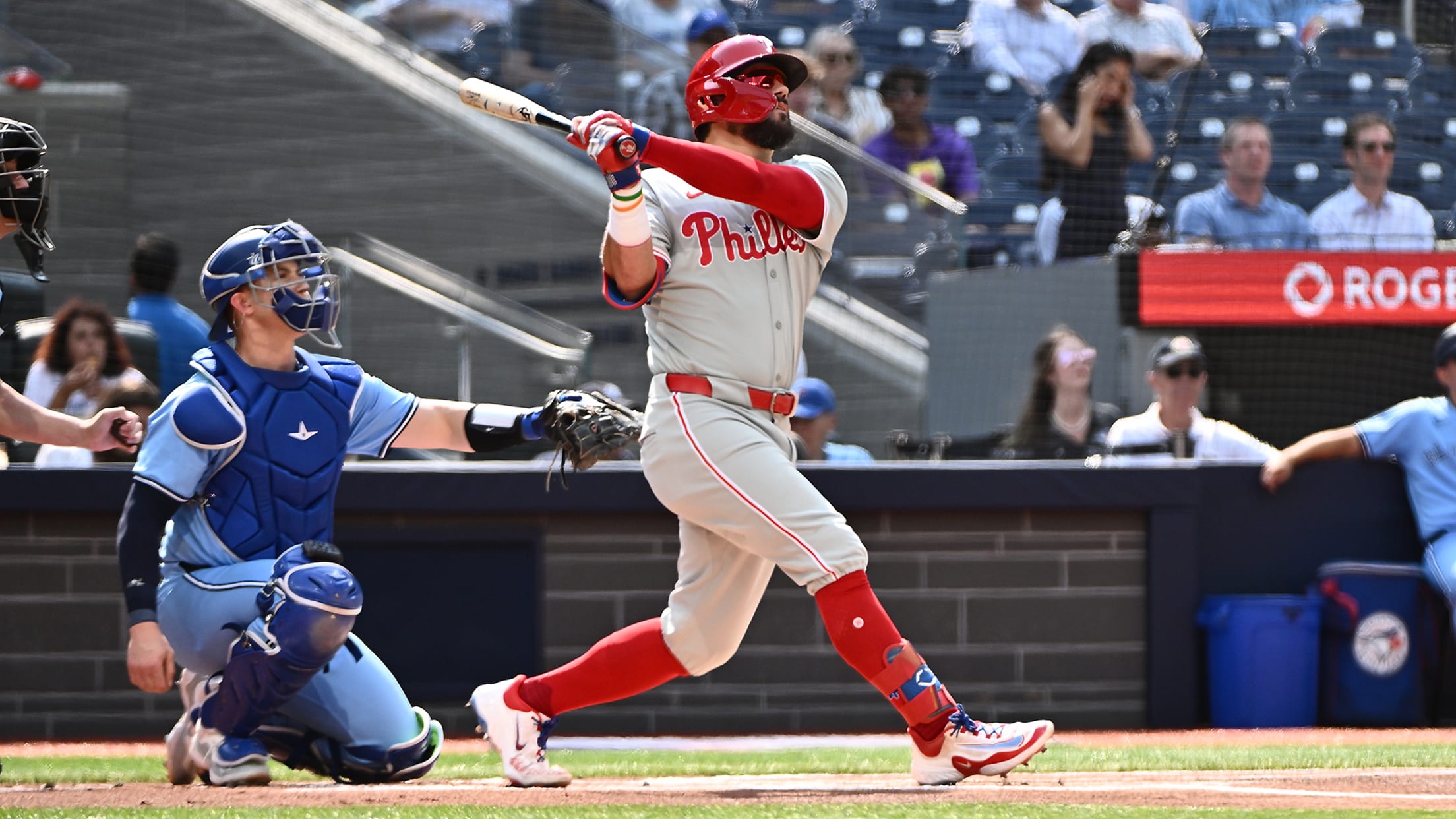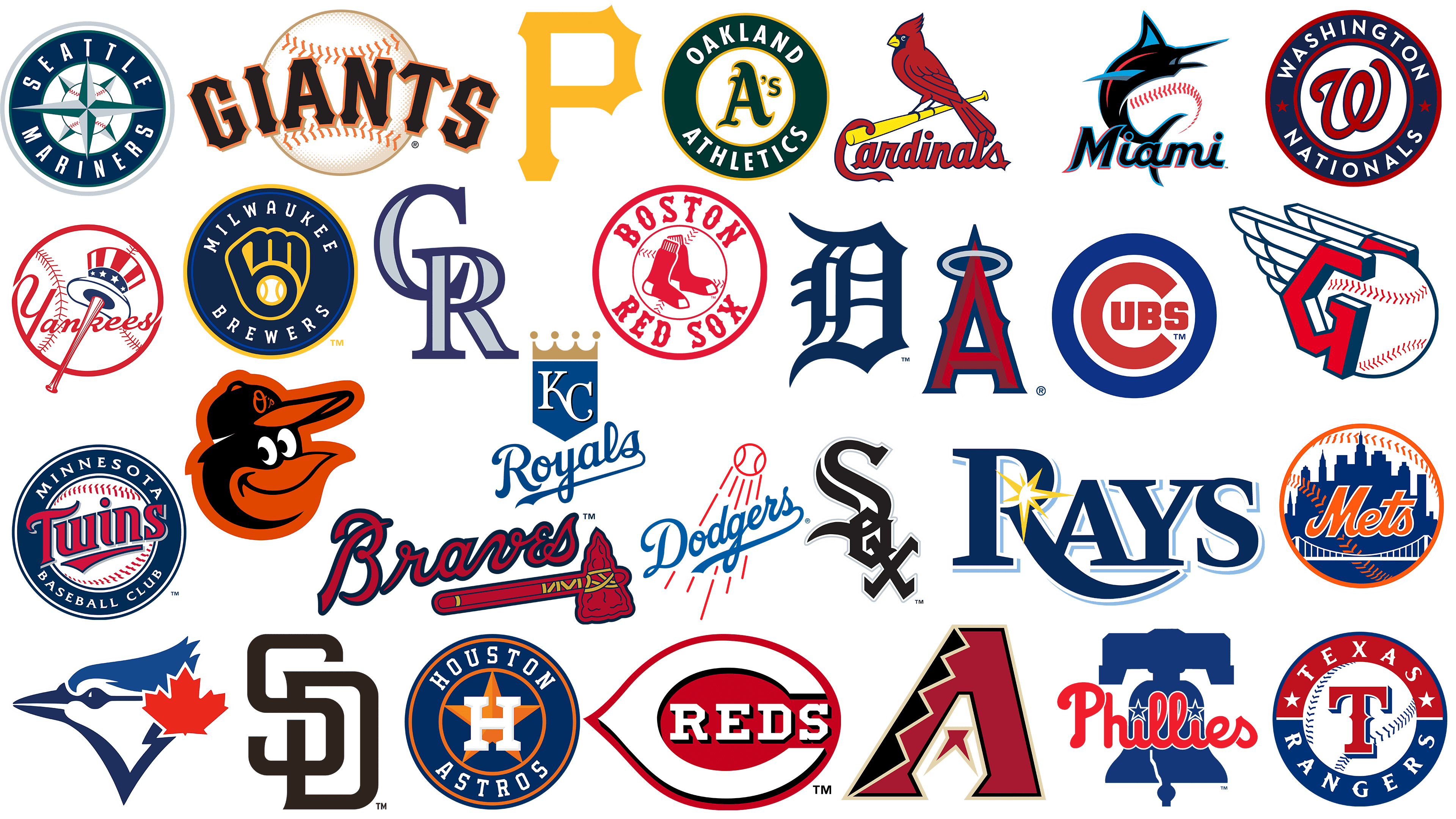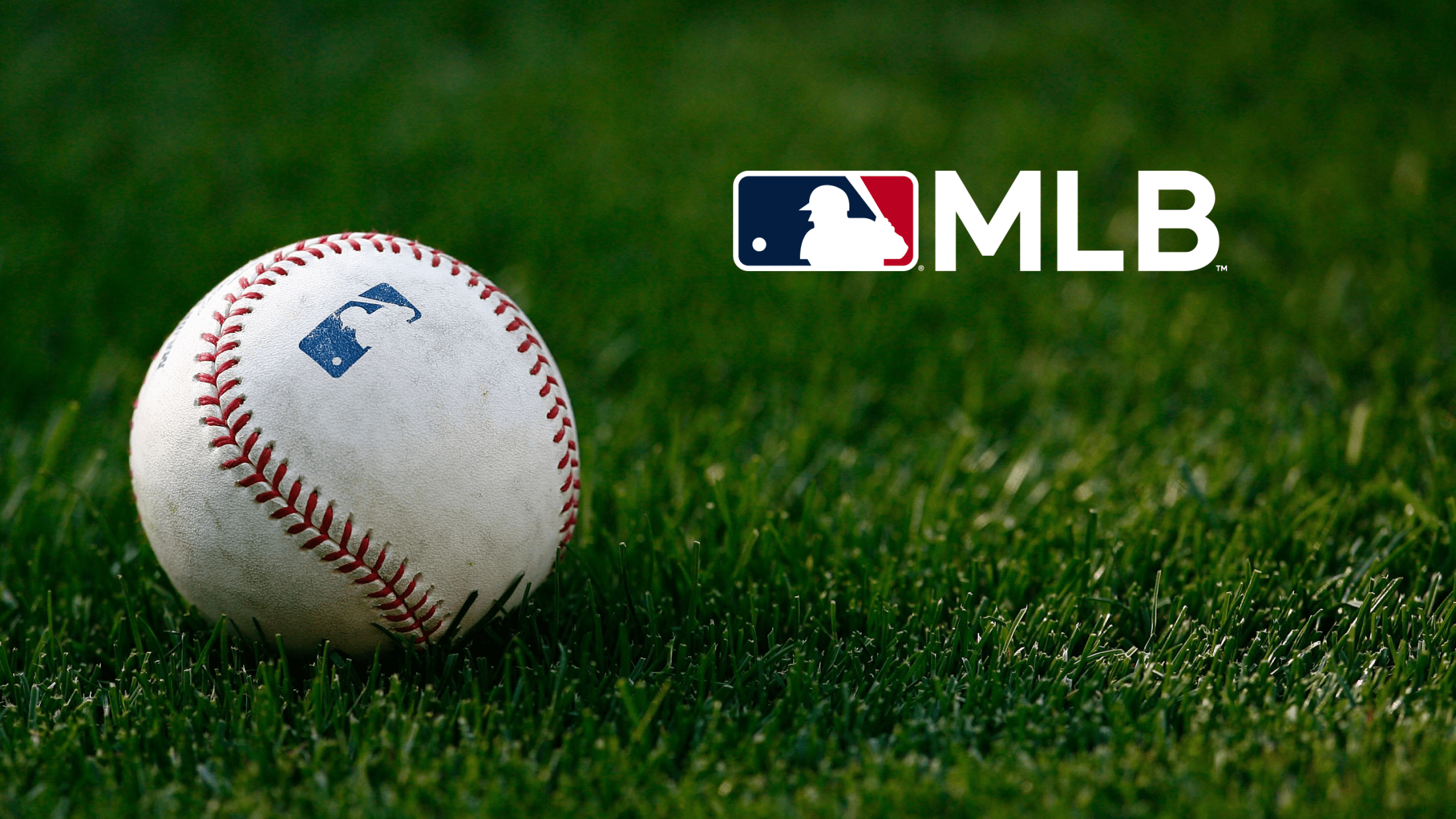Baseball, a cherished pastime, truly feels the pulse of the outdoor elements, and when we consider the idea of "MLB Swisher Weather," we're really looking at how Mother Nature plays a part in the grand theater of the game. It's about more than just a little drizzle or a gust of wind; it's about the very conditions that shape the action on the field, influencing everything from a fly ball's trajectory to a pitcher's grip, and, you know, it can really change how a game unfolds. This connection between the skies and the diamond is a fascinating aspect of the sport, something fans and players alike often talk about, and it's a topic that, in some respects, touches every part of the Major League Baseball experience, from the first pitch to the final out.
The conditions outside can make a huge difference in how baseball games go, and when people mention "MLB Swisher Weather," it might bring to mind those moments where the skies seem to have a say in the play. You see, the folks who follow the sport closely, whether on official sites or news channels, are always keeping an eye on these things because they affect scores, player performances, and even the overall flow of the season. It’s a bit like an extra player on the field, a very powerful one that can turn a routine play into something quite memorable or, frankly, make things a little tough for everyone involved.
This idea of "Swisher Weather" as it relates to MLB isn't just a casual thought; it really speaks to how much the natural world impacts the sport we love. From how teams prepare to how broadcasters cover the action, the atmospheric conditions are always a talking point. It’s a part of the stories we hear, the highlights we watch, and the stats we pour over, making the game that much more dynamic and, in a way, unpredictable, which is, you know, part of what makes baseball so compelling.
- Iot Device Remote Ssh Raspberry Pi Free Download
- Onlyfans Ms Sethi
- Wwwmaal49com
- Gocryptobetcom
- Remote Iot Ssh Free
Table of Contents
- Who is Nick Swisher and Why Does Weather Matter to His Game?
- Nick Swisher - Personal Details and Career Overview
- How Does MLB Swisher Weather Shape Player Performance?
- What Role Does MLB Swisher Weather Play in Game Outcomes?
- The Influence of MLB Swisher Weather on Broadcasts and Fan Engagement
- Are There Strategic Adjustments for MLB Swisher Weather?
- Keeping Tabs on MLB Swisher Weather - Data and Reporting
- The Ever-Present Element - MLB Swisher Weather Through History
Who is Nick Swisher and Why Does Weather Matter to His Game?
Nick Swisher, a well-known figure in Major League Baseball, spent a good chunk of his career playing for several teams, bringing a lively spirit to the field and, you know, hitting a fair number of home runs. His time in the big leagues saw him experience all sorts of outdoor conditions, from hot summer days to chilly spring evenings, and even some rainy afternoons. The concept of "MLB Swisher Weather" can be seen as a way to think about how these varying elements might have played a part in his individual games, influencing his swings, his fielding, and how his teams performed overall.
Every player, including someone like Nick Swisher, feels the direct effects of the weather. A strong gust of wind might turn a deep fly ball into a routine out, or perhaps, in some respects, carry a pop-up into foul territory. Pitchers, too, have to adjust their grip and delivery when it’s cold or wet, which can really change the way a game flows. When we check out official sites for player stats, like those found on mlb.com or CBS Sports, we're seeing numbers that were, in fact, gathered under all kinds of skies, making us wonder about the subtle impacts of the atmosphere on each play.
So, when we consider "MLB Swisher Weather," it's not just about one specific event, but rather a broader idea of how the natural surroundings are always a silent partner in the sport. It's about how a player’s ability to adapt to different conditions might separate a good day from a less successful one. The news outlets, like ESPN or Sporting News, often report on these very conditions, giving fans a fuller picture of what happened on the field, and that, you know, includes how the elements might have influenced a player's performance.
- Plumpy Mage
- Raspberry Pi Iot Server Free
- Remoteiot Platform Ssh Key
- Why Is Amanda Morgan Leaving Channel 15
- Securely Connect Raspberry Pi With The Vpc Network And Remoteiot P2p
Nick Swisher - Personal Details and Career Overview
Nick Swisher, born in Columbus, Ohio, made a name for himself as a switch-hitting outfielder and first baseman during his professional baseball days. His spirited personality and consistent play made him a fan favorite wherever he went. He played for a number of different clubs, making his big league debut in 2004 and continuing his career for over a decade, leaving a distinct mark on the sport. His journey through various ballparks meant he encountered a full range of atmospheric conditions, which, you know, is just part of playing outdoor sports.
| Full Name | Nicholas Thompson Swisher |
| Born | November 25, 1980 |
| Birthplace | Columbus, Ohio |
| Position | Outfielder / First Baseman |
| Bats/Throws | Switch / Left |
| MLB Debut | September 3, 2004 |
| Teams Played For | Oakland Athletics, Chicago White Sox, New York Yankees, Cleveland Indians, Atlanta Braves |
| All-Star Selections | 1 (2010) |
Throughout his time playing, Swisher’s stats and highlights were always a focus for sports media. Whether it was his home run totals or his on-base percentage, every piece of his performance was tracked by places like CBS Sports and MLB.com. You could always find the latest updates on his games, perhaps even seeing how a particular game's atmosphere might have played a role in the box score. This constant tracking helps fans and analysts understand the full story of a player's career, and that, you know, includes the circumstances of each game.
His career saw him play in many different ballparks, each with its own unique climate. From the dry heat of Oakland to the humid summers of New York, Nick Swisher experienced it all. This variety of outdoor conditions is, in a way, part of what makes baseball so interesting. It means that every game, every pitch, and every swing is affected by the immediate surroundings, making the idea of "MLB Swisher Weather" a pretty relevant concept for any player.
How Does MLB Swisher Weather Shape Player Performance?
The outdoor conditions can truly alter how players perform on the baseball field, something very much tied to the idea of "MLB Swisher Weather." A hot, humid day, for instance, can make it tougher for pitchers to get a good grip on the ball, possibly leading to more walks or wild pitches. Batters, on the other hand, might find the air a bit thicker, which could reduce the distance a ball travels, turning what might have been a home run into a long fly out. You see, these subtle shifts really add another layer to the game.
Wind, too, plays a very significant role. A strong wind blowing in from the outfield can turn even the hardest hit balls into easy catches, while a wind blowing out can help carry a routine fly ball over the fence. Fielders also have to deal with swirling winds that make tracking fly balls a genuine challenge. Player stats, which we can find on sites like ESPN or Sporting News, reflect these conditions, even if they don't explicitly say "wind-aided home run." It's just part of the overall picture of how a game unfolds, and that, you know, makes every play a bit more interesting.
Cold weather, especially early in the season, can make it difficult for players to stay loose and warm. This might affect a player's throwing velocity or their ability to swing the bat with full power. Injuries, too, can sometimes be more likely in colder conditions as muscles are less pliable. The news updates from CBS Sports often cover injury reports, and while they might not always link them directly to "MLB Swisher Weather," the connection is, in some respects, often there for those paying close attention to the conditions.
What Role Does MLB Swisher Weather Play in Game Outcomes?
The influence of "MLB Swisher Weather" on game outcomes is quite substantial, as it can directly change the flow of play and even the final score. Rain, for example, can lead to game delays or even cancellations, forcing teams to reschedule or play doubleheaders later on. These disruptions can affect team momentum and player rest, which, you know, can have a real impact on a team's overall performance during a season. You can always find updated schedules and standings on mlb.com, which reflect these weather-related adjustments.
Beyond just delays, the quality of play itself can be different in various weather conditions. A wet field might lead to more errors, as players slip or have trouble fielding ground balls cleanly. Pitchers might struggle with control, leading to more walks and hit batters. These factors can tip the scales in a close game, turning a potential win into a loss. Live scores and play breakdowns on ESPN show the immediate results of these plays, but the underlying "MLB Swisher Weather" is often the silent contributor to what you see on the scoreboard.
High winds can also create some truly unpredictable moments, turning routine plays into adventures. A strong crosswind might make it tough for a catcher to throw out a base stealer, or it could cause a pitcher's breaking ball to move in an unexpected way. These are the kinds of moments that add a layer of unpredictability to baseball, and they are, in fact, a big part of what makes each game unique. The official standings for Major League Baseball, available on various sports sites, certainly reflect the sum total of all these weather-influenced games.
The Influence of MLB Swisher Weather on Broadcasts and Fan Engagement
The concept of "MLB Swisher Weather" extends beyond the field and into how games are presented and how fans connect with the sport. Broadcasters, like those on ESPN or NBC Sports, frequently talk about the weather conditions during a game, often showing graphics with temperature, wind speed, and even radar images. This information helps viewers at home understand the context of the plays they are seeing, and it, you know, adds another layer to the commentary.
For fans attending games, the weather is a huge factor. A beautiful, sunny day can draw a large crowd, creating a lively atmosphere at the ballpark. On the other hand, cold temperatures or the threat of rain can reduce attendance, affecting the overall experience. The stories and highlights available on Sporting News often capture the mood of the crowd, which is, in some respects, often shaped by the weather.
Even for fantasy baseball players, "MLB Swisher Weather" can be a consideration. Knowing if a game might be delayed or played in tough conditions can influence lineup decisions. A pitcher struggling in the cold might be benched, or a power hitter facing a strong wind blowing in might be a less appealing pick for that day. CBS Sports, with its fantasy games and projections, implicitly factors in these conditions, even if it doesn't spell out "weather impact" for every single player. It's just part of the overall strategy, and that, you know, makes it a bit more challenging.
Are There Strategic Adjustments for MLB Swisher Weather?
Managers and coaching staff certainly make adjustments based on "MLB Swisher Weather" forecasts, trying to give their team the best chance to succeed. If strong winds are expected to blow out of the park, a manager might choose to put more power hitters in the lineup, hoping to take advantage of the favorable conditions for home runs. Conversely, if the wind is blowing in, a team might focus more on hitting line drives and ground balls, which, you know, are less affected by the wind.
Pitching choices are also affected by the outdoor elements. In cold weather, a pitcher who relies heavily on a breaking ball might struggle to get the same spin and movement, so a manager might opt for a pitcher with a strong fastball or sinker. Similarly, if rain is expected, a team might consider a pitcher who can get quick outs, trying to complete as many innings as possible before a delay. These tactical decisions are a big part of the game, and they are, in fact, often discussed in the latest MLB news and analysis found on sites like Bleacher Report.
Defensive positioning can also shift with the "MLB Swisher Weather." If a strong crosswind is predicted, outfielders might adjust their starting positions to account for how the wind will carry fly balls. In a way, every aspect of the game plan can be influenced by what's happening above the field. Teams spend a lot of time preparing for these possibilities, and that, you know, includes looking at all the forecasts available to them.
Keeping Tabs on MLB Swisher Weather - Data and Reporting
Keeping track of "MLB Swisher Weather" and its impact is a constant effort for sports media outlets, as they strive to provide fans with the most complete picture of the game. Official sources like mlb.com are the go-to for official standings and schedules, which naturally reflect any weather-induced postponements or changes. When a game is delayed, or, you know, even cancelled, these sites are the first to update that information for the public.
Sports news giants like ESPN and CBS Sports offer extensive coverage, including live scores, video highlights, and the very latest news. When weather plays a part in a significant play, like a wind-blown home run or a rain-shortened game, these outlets are quick to analyze and report on it. They provide box scores, play breakdowns, and even updated odds that implicitly take the game's conditions into account. It's really quite thorough, and that, you know, helps fans stay informed about every aspect of the game.
Specialized reports on player stats, injury updates, and trade analysis from places like Sporting News and NBC Sports often include details that might be subtly linked to "MLB Swisher Weather." For instance, a player struggling with a lingering injury might find cold weather particularly challenging, and while the report might not explicitly state "weather-related," the context is often there for those who follow closely. These various sources combine to paint a full picture of the season, and that, you know, includes all the little details that affect play.
The Ever-Present Element - MLB Swisher Weather Through History
The idea of "MLB Swisher Weather" isn't a new phenomenon; the outdoor elements have always been a fundamental part of baseball since its earliest days. Before domes and retractable roofs became common, every single game was at the mercy of the skies. Stories from baseball's past are filled with tales of muddy fields, blinding sun, and games called due to darkness or sudden storms. This enduring connection between the game and its natural surroundings is, in some respects, what makes baseball so unique among major sports.
Generations of players, much like Nick Swisher, have had to adjust their play to whatever Mother Nature threw at them. From legendary pitchers battling strong winds to batters trying to hit in a downpour, the challenges posed by the weather have always been a part of the game's narrative. These historical accounts, often found in archives or older news reports, show how deeply intertwined the sport and the atmosphere truly are. It’s a tradition, really, and that, you know, continues to this day.
Even with today's advanced technology and weather forecasting, "MLB Swisher Weather" remains a powerful, unpredictable force. While we can now get very detailed forecasts from various sources, the actual conditions during a game can still surprise everyone. This constant interplay between human skill and natural elements is a core part of baseball's appeal, making every game a little different and, frankly, a bit more exciting. It ensures that the game, in a way, always has an element of surprise, which is, you know, what keeps fans coming back for more.
- Best Remote Iot Web Ssh
- Best Ssh Remoteiot Raspberry Pi
- Plumpy Mage
- Best Remoteiot Ssh Key Management
- Best Ssh Iot Platform For Raspberry Pi


